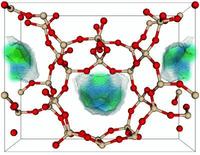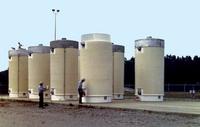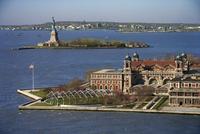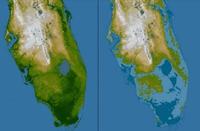-
Adm. Michael Rogers: Businesses must “own” cybersecurity threats

Cybersecurity threats are a vital issue for the nation, and like the Defense Department, businesses must own the problem to successfully carry out their missions, DOD’s top cybersecurity expert told a forum of businesspeople.
-
-
Better building design, maintenance would cut building sector’s emissions by around 80%
The construction industry, which uses half of the 1.5 billion tons of steel produced each year, could slash its carbon emissions by as much as 50 percent by optimizing the design of new buildings, which currently use double the amount of steel and concrete required by safety codes. If buildings are also maintained for their full design life and not replaced early, the sector’s emissions could in total be cut by around 80 percent.
-
-
DARPA’s Cyber Grand Challenge aims to see fully automated network security systems developed

There is an increasingly serious cybersecurity problem: the inadequacy of current network security systems, which require expert programmers to identify and repair system weaknesses — typically after attackers have taken advantage of those weaknesses to steal data or disrupt processes. Such disruptions pose greater risks than ever as more and more devices, including vehicles and homes, get networked in what has become known as “the Internet of things.” DARPA is addressing this problem, with teams from around the world starting a two-year track toward the world’s first tournament of fully automated network security systems. Computer security experts from academia, industry, and the larger security community have organized themselves into more than thirty teams to compete in DARPA’s Cyber Grand Challenge — first-of-its-kind tournament designed to speed the development of automated security systems able to defend against cyberattacks as fast as they are launched.
-
-
Roots of Trust research focuses on protecting cyber physical systems
“Roots of Trust” refers to a set of security functions in a device or system, which are implicitly trusted by the device’s operating system and applications, and which constitute the foundation for security. The Cyber Security Research Alliance (CSRA) the other day said it will prioritize research in Roots of Trust for cyber physical systems (CPS), to help address growing cyber security threats to public and private critical infrastructure.
-
-
New material captures CO2 at natural gas wellheads

Natural gas is the cleanest fossil fuel. Development of cost-effective means to separate carbon dioxide during the production process will improve this advantage over other fossil fuels and enable the economic production of gas resources with higher carbon dioxide content that would be too costly to recover using current carbon capture technologies. Rice University chemists invented a porous material which sequesters carbon dioxide, a greenhouse gas, at ambient temperature with pressure provided by the wellhead, and lets it go once the pressure is released. The material shows promise to replace more costly and energy-intensive processes.
-
-
Federal oversight of ammonium nitrate exceedingly weak
A new Government Accountability Office(GAO) report found that the federal government has no way of fully knowing which chemical facilities stockammonium nitrate, a widely used fertilizer which was the cause of the explosion last year at a West, Texas fertilizer plan, which resulted in the death of fourteen people – and which was used by Timothy McVeigh in Oklahoma City twenty years ago. Poor data sharing with states, outdated federal policies, and numerous industry exemptions have contributed to a weak federal oversight. Without improved monitoring, regulators “will not know the extent to which dangerous conditions at some facilities may continue to exist,’’ the GAO report said.
-
-
Santa Monica to require retrofit of earthquake-vulnerable buildings
Last week, the Santa Monica City Councilauthorized city officials to hire engineering consultants to help identify buildings built before 1996 which could potentially be at risk in a major earthquake.. Owners of vulnerable buildings would be notified and provided recommendations on how to best retrofit their buildings to make them more resilient. Santa Monica will become the first city in California to require retrofitting for concrete, steel, and wood-frame. San Francisco last year required similar retrofitting, but only for wood apartment buildings.
-
-
Hurricanes with female names deadlier than male-named storms
In the coming Atlantic hurricane season, watch out for hurricanes with benign-sounding names like Dolly, Fay, or Hanna. According to a new study, hurricanes with feminine names are likely to cause significantly more deaths than hurricanes with masculine names, apparently because storms with feminine names are perceived as less threatening.
-
-
U.K. to face heavier, more frequent summer downpours, more destructive flash floods
Global warming could cause extreme summer downpours to become several times more frequent in the United Kingdom by 2100, a new study suggests. Its authors say this will likely lead to an increased risk of flash flooding, similar to the Boscastle floods of 2004 and the “Toon Flood” in Newcastle in 2012.
-
-
NRC will not require nuclear plants to transfer waste to dry cask storage

Cooling pools on the grounds of U.S. nuclear plants, where toxic nuclear waste is stored, are near capacity, and in 2010 the plug was pulled on the Yucca Mountain centralized national nuclear waste repository, meaning that for the foreseeable future radioactive will continue to accumulate on site at the more than 100 nuclear power plants. Lawmakers called on the U.S. Nuclear Regulatory Commission (NRC) to require nuclear plants to hurry the transfer of spent fuel from the cooling pools to dry cask storage, which scientists consider much safer. The NRC, however, has decided that, at least for now, there is now reason to require nuclear plants to do so.
-
-
The Pentagon integrates climate change into military planning
With the release of the National Climate Assessment last month, a clearer picture has emerged of the official policy-related interpretation of climate change data. The debate may still go on amongst civilian branches of government, and between the administration and its critics, the Pentagon, for some time now, has already been integrating climate change-related policies into its daily operations across all branches of the military.
-
-
Sea level rise, not Hurricane Sandy impacts, main cause of subsequent East Coast storm flooding
Flooding in coastal areas bordering Great South Bay, New York, and Barnegat Bay, New Jersey caused by winter storms that occurred following Hurricane Sandy was not influenced by changes Sandy made to barrier islands or other bay features, according to a new U.S. Geological Survey study. “While the existing barrier island and inlet system shield the mainland to a great extent from the daily tides, most of the storm surge, and all long-term changes in water level, such as those resulting from sea level rise, reach the mainland,” say the study’s authors.
-
-
Extreme weather events threaten U.S. national landmarks

Rising seas, floods, and wildfires are threatening the U.S. most cherished historic sites — from Ellis Island to the Everglades, Cape Canaveral to California’s César Chávez National Monument. Scientists say that today these sites face an uncertain future in a world of rising sea levels, more frequent wildfires, increased flooding, and other damaging effects of climate change. At some sites — such as Liberty and Ellis Islands and Cape Hatteras — steps have already been taken to prepare for these growing climate risks. At many other sites, such efforts have not yet begun.
-
-
Canada is not doing enough to prepare for, cope with natural, man-made disasters
The 2013 Alberta floods cost more than $6 billion, making it the worst weather disaster in Canada’s history. Before 1990, only three Canadian disasters exceeded $500 million, but in the past ten years alone nine disasters have exceeded that amount. Disaster management experts said that while it may be understandable that corporate and municipal budgets for disaster training and preparations have been reduced during the economic slowdown, corporate and government leaders in Canada must consider how such reductions would impact the ability of communities to build adequately resilience systems against potential natural and manmade disasters.
-
-
Rising sea levels will be too much, too fast for Florida

The U.S. National Oceanic and Atmospheric Administration (NOAA) published its assessment of sea level rise in 2012 as part of the National Climate Assessment. Including estimates based on limited and maximum melt of the Greenland and Antarctic ice sheets, it anticipated a raise of 4.1 to 6.6ft (1.25 to 2m) by 2100, reaching 2ft (0.6m) by around 2050 and 3ft (0.9m) by around 2075. This means that by the middle of this century most of the barrier islands of south Florida and the world will be abandoned and the people relocated, while low areas such as Sweetwater and Hialeah bordering the Everglades will be frequently flooded and increasingly difficult places to live. Florida will start to lose its freshwater resources, its infrastructure will begin to fail, and the risk of catastrophic storm surges and hurricane flooding will increase. Florida counties should be planning for their future to determine at what point the costs of maintaining functional infrastructure, insurance, and human health and safety becomes economically impossible. Already, there are areas and properties that will become unlivable within a 30-year mortgage cycle.
-
More headlines
The long view
Water Wars: A Historic Agreement Between Mexico and US Is Ramping Up Border Tension
As climate change drives rising temperatures and changes in rainfall, Mexico and the US are in the middle of a conflict over water, putting an additional strain on their relationship. Partly due to constant droughts, Mexico has struggled to maintain its water deliveries for much of the last 25 years, deliveries to which it is obligated by a 1944 water-sharing agreement between the two countries.
Trump Is Fast-Tracking New Coal Mines — Even When They Don’t Make Economic Sense
In Appalachian Tennessee, mines shut down and couldn’t pay their debts. Now a new one is opening under the guise of an “energy emergency.”
Smaller Nuclear Reactors Spark Renewed Interest in a Once-Shunned Energy Source
In the past two years, half the states have taken action to promote nuclear power, from creating nuclear task forces to integrating nuclear into long-term energy plans.
Keeping the Lights on with Nuclear Waste: Radiochemistry Transforms Nuclear Waste into Strategic Materials
How UNLV radiochemistry is pioneering the future of energy in the Southwest by salvaging strategic materials from nuclear dumps –and making it safe.
Model Predicts Long-Term Effects of Nuclear Waste on Underground Disposal Systems
The simulations matched results from an underground lab experiment in Switzerland, suggesting modeling could be used to validate the safety of nuclear disposal sites.
